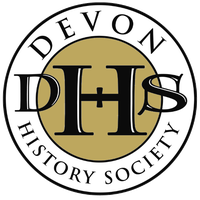Clodd, Miss Mary, St Agnes, 37 Bitton Street, Teignmouth
Mary Clodd (1835 – 1923)[1] was born on 15 July 1835 in Framlingham, Suffolk, the daughter of George and Martha Clodd. Martha had been born Martha Webb, and was first married in 1811 to Thomas Larner . George Clodd, whom she married in 1831 after Larner’s death, was a tailor and draper, and the family lived and ran their business in Wellclose Square, Framlingham. When George Clodd died in 1866 Martha’s son James Larner took on the business, known by then as ‘Clodd and Larner’.[2] Mary is listed in 1871 living with James and his wife Harriette[3] in Wellclose Square, assisting in the draper’s shop. James died later that year but the family were still there in 1881 with Harriette listed as head of household.
Mary was one of the earliest known suffrage activists. and the story of her work in East Anglia has been published as part of the UK Parliament’s ‘Teach1866’ resource, which describes her as ‘one of the few women who signed the 1866 petition and also lived to see Representation of the People Act passed in 1918’.[4] Sources suggest that Mary’s family shared her support for Women’s Suffrage. Martha and Mary Clodd and Harriette Larner all signed the 1866 mass petition for women’s suffrage.[5] Mary Clodd also attempted in 1868 to have her name added to the lists of voters as an occupier, but her name was struck off as a result of an objection from the overseers.[6]
James Larner, who was. as his memorial in the churchyard at Framlingham shows, ‘a preacher of righteousness, a teacher of temperance, and an advocate of civil rights and political freedom’ also supported women’s suffrage.[7] In 1871 he chaired a suffrage meeting in Framlingham at which Millicent Fawcett, the future President of the National Union of Women’s Suffrage Societies, and who was herself from a Suffolk family, was one of the speakers. Mary Clodd attended and proposed the vote of thanks.[8]
By 1891 the family had dispersed. Martha Clodd had died in 1881. Mary moved on to live with other family members living in Leek, where she was in 1891 and 1901. There are no accounts yet discovered about her continuing activity in the suffrage movement at the end of the nineteenth century. By 1911 she was living in Teignmouth with her older half-sister Elizabeth. She appears frp, 1903 onwards in accounts of meetings of the Teignmouth Literary Society, on the committee of the South Devon Antivivisectionists and as joint secretary to the Teignmouth branch of the Women’s Liberal Association[9];
In 1912 at the age of 77 she became the third secretary of the Teignmouth branch of the National Union of Women’s Suffrage Societies. In 1913 she presided at the Annual Meeting.[10]
Mary died at St Agnes, 27 Bitton Street in June 1923.
Entry created by Marilyn Smee, November 2018
[1] Family and census information from www.ancestry.co.uk
[2] Framlingham Weekly News, 2 Jul 1864 contains an advertisement for ‘Clodd and Larner, wholesale and retail woollen drapers, tailors and hatters’
[3] Harriette is often referred to as Martha’s daughter and thus Mary’s sister, for example in Elizabeth Crawford, The Women’s Suffrage Movement in Britain and Ireland, (London, Routledge, 2006),96. However it was James Larner who was Martha’s son and thus Mary’s half-brother.
[4] http://www.teach1866petition.com/app/uploads/2016/12/VOTE100_EAST-ANGLIA_v2.pdf Accessed 3 Nov 2018.
[5] https://www.parliament.uk/documents/parliamentary-archives/1866SuffragePetitionNamesWebFeb18.pdf Accessed 2 Nov 2018.
[6] Suffolk Chronicle, 26 Sep 1868.
[7] James Larner memorial, https://billiongraves.com/grave/James-Larner/11989308 . Accessed 3 Nov 2018.
[8] Framlingham Weekly News, 22 April 1871.
[9] DEG, 21 Jan 1903; 20 Jul 1907; E&E, 19 Feb 1910.
[10] Common Cause, 23 Feb 1913.
